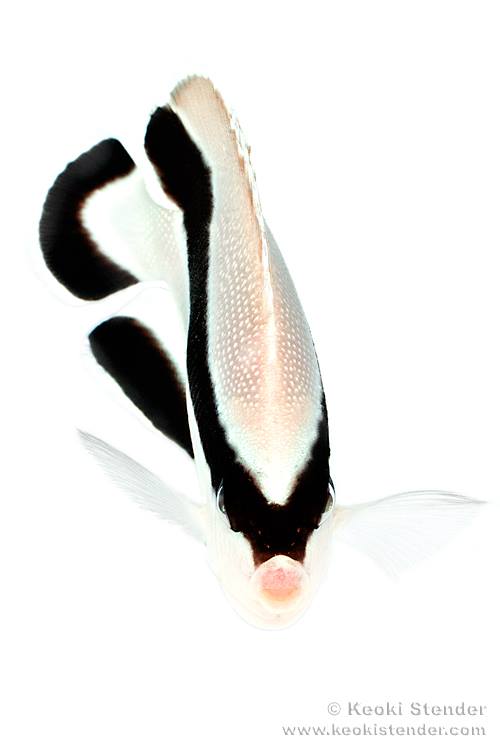![Snorkel Bob: Friend, foe or lost soul? seashepherdorg 300x83 Snorkel Bob: Friend, foe or lost soul?]() Snorkel Bob, it sounds almost like a Saturday morning cartoon character, that introduces our children to ocean wildlife, cracking a few corny jokes along the way. If you’re a marine aquarist, chances are you have heard Snorkel Bob’s name, and quickly he has become the one guy marine aquarists love to hate. Some call his actions a “war on aquariums” while others refer to him like the protagonist of the Harry Potter series, with a name that won’t be spoken. Regardless of your attitude towards Snorkel Bob, he has rallied environmentalists and legislators, starting a conservation movement with one endgame, a complete ban on any and all trade, collection, sale of marine wildlife. With the support of multi-national conservation group Sea Shepherd, and a growing number of independent followers, Snorkel Bob’s personal movement has gained traction. Who is Snorkel Bob, why does he hate the aquarium trade and within all the mud that gets tossed around, is there any silver lining? Snorkel Bob is in fact Robert Witner, a semi-well known writer, living in Maui County, Hawaii. Perhaps more renown than his writing, is the line of snorkel and scuba shops which he founded throughout the Hawaiian islands. As far as his writing works, they exist as a mixture of fiction and travel guides. In Witner’s fiction, characters seek reason from within the natural environment, and his travel guides are a colorful version of something found in Lonely Planet. Last year I read In a Sweet Magnolia Time, and looking at it without any pre-conceived notion of Witner from an aquarist’s perspective, it wasn’t too bad.
Snorkel Bob, it sounds almost like a Saturday morning cartoon character, that introduces our children to ocean wildlife, cracking a few corny jokes along the way. If you’re a marine aquarist, chances are you have heard Snorkel Bob’s name, and quickly he has become the one guy marine aquarists love to hate. Some call his actions a “war on aquariums” while others refer to him like the protagonist of the Harry Potter series, with a name that won’t be spoken. Regardless of your attitude towards Snorkel Bob, he has rallied environmentalists and legislators, starting a conservation movement with one endgame, a complete ban on any and all trade, collection, sale of marine wildlife. With the support of multi-national conservation group Sea Shepherd, and a growing number of independent followers, Snorkel Bob’s personal movement has gained traction. Who is Snorkel Bob, why does he hate the aquarium trade and within all the mud that gets tossed around, is there any silver lining? Snorkel Bob is in fact Robert Witner, a semi-well known writer, living in Maui County, Hawaii. Perhaps more renown than his writing, is the line of snorkel and scuba shops which he founded throughout the Hawaiian islands. As far as his writing works, they exist as a mixture of fiction and travel guides. In Witner’s fiction, characters seek reason from within the natural environment, and his travel guides are a colorful version of something found in Lonely Planet. Last year I read In a Sweet Magnolia Time, and looking at it without any pre-conceived notion of Witner from an aquarist’s perspective, it wasn’t too bad. ![Snorkel Bob: Friend, foe or lost soul? 20120719090447 665483351 124 9 300x225 Snorkel Bob: Friend, foe or lost soul?]() He claims the aquarium industry has devastated native Hawaiian fish populations due to over-fishing. His claims have merit, and Hawaii has designated “no-take” zones, which have shown a rebound of species. Though Charles Deelbek and the Waikiki Aquarium have shown that reef collection has little impact overall on the state of Hawaiian reefs. In addition, he claims that most of the animals imported into the reef aquarium trade are offered a terrible existence, literal torture before a death that occurs within a matter of weeks or months. His sights have largely been set on Quality Marine and Petco, but any outlet selling marine livestock isn’t spared in the blast radius. He refers to aquarists as an ignorant bunch of animal jocks who relish in their ability to poorly re-create oceanic ecosystems, who at the same time care little about the environment they are devastating.… More:
He claims the aquarium industry has devastated native Hawaiian fish populations due to over-fishing. His claims have merit, and Hawaii has designated “no-take” zones, which have shown a rebound of species. Though Charles Deelbek and the Waikiki Aquarium have shown that reef collection has little impact overall on the state of Hawaiian reefs. In addition, he claims that most of the animals imported into the reef aquarium trade are offered a terrible existence, literal torture before a death that occurs within a matter of weeks or months. His sights have largely been set on Quality Marine and Petco, but any outlet selling marine livestock isn’t spared in the blast radius. He refers to aquarists as an ignorant bunch of animal jocks who relish in their ability to poorly re-create oceanic ecosystems, who at the same time care little about the environment they are devastating.… More:
The post Snorkel Bob: Friend, foe or lost soul? appeared first on reefs.com.

















